Vaccine Types
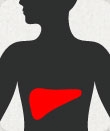
Hepatitis B
What is it?
Hepatitis B is an infection of the liver caused by the hepatitis B virus (HBV) which is spread through blood and bodily fluids. HBV remains alive and viable in the environment for at least seven days and can ‘live’ on inanimate objects, even those that do not show visible signs of blood. Most people with hepatitis B have few or no symptoms, making transmission to unvaccinated individuals easier. Although rare, HBV can be transmitted in medical settings, classrooms, or in the workplace.
Most newborns and about 50 percent of children who are infected with hepatitis B develop chronic hepatitis. The younger a person is when infected, the greater risk of developing chronic hepatitis. Chronic hepatitis damages the liver and can lead to liver cancer or cirrhosis.
Why is it important?
Parents often ask why this vaccine is recommended for babies when most of them won't be exposed to HBV for many years. There are three basic reasons why we vaccinate at birth:
1. Completing this vaccine series gives your child decades-long protection against the disease.
2. Babies and young children are at very high risk of developing chronic HBV infection. Over 1.2 million people in the U.S. are chronically infected with the hepatitis B virus.
3. Early childhood infections do happen – before the vaccine about 16,000 children under the age of 10 were infected with HBV every year in the U.S.
Progress
Since the U.S. started a national strategy to eliminate HBV in 1991, the rate of new HBV infections has declined by approximately 82 percent. The decline has been greatest among children born since 1991, when routine vaccination of children was first recommended.
Vaccine Recommendations
The Advisory Committee on Immunization Practices (ACIP) recommends that all children receive their first dose of Hepatitis B vaccine at birth and complete the vaccine series by age 6–18 months. Older children and adolescents who did not previously receive the Hepatitis B vaccine should also be vaccinated.
Side Effects
Hepatitis B is a very safe vaccine. Most people do not have any side effects. Severe allergic reactions are rare and are believed to occur about once in 1.1 million doses.
Mild side effects may include:
- Soreness where the shot was given (up to about 1 in 4)
- Temperature of 99.9°F or higher (up to about 1 person in 15).
Influenza
Influenza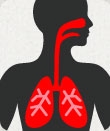
Influenza (flu) is a highly contagious viral upper respiratory illness. Flu may be complicated by other risk factors, including pneumonia. [+] more
|
Hepatitis B
Hepatitis B
Hepatitis B virus (HBV) affects the liver and is primarily spread through blood and bodily fluids. Acute HBV infection can lead to chronic HBV and liver damage. [+] more
|
Polio
Polio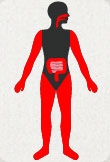
Poliomyselitis (polio) is an extremely contagious viral infection that affects the nerve cells of the brain stem and spinal cord and can lead to paralysis. [+] more
|
Diphtheria
Diphtheria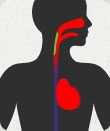
Diphtheria is a bacterial respiratory illness that causes a thick covering in the back of the throat, leading to breathing problems, paralysis, or heart failure. [+] more
|
Rotavirus
Rotavirus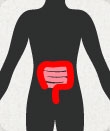
Rotavirus is a viral infection of the digestive track, and is the most common cause of severe diarrhea and vomiting in infants and young children. [+] more
|
Pneumococcal
Pneumococcal
Pneumococcal bacteria live in noses and throats of people of all ages. Pneumococcus can infect the middle ear, sinuses, lungs, central nervous system and bloodstream. [+] more
|
Measles
Measles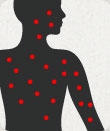
Measles is a highly contagious viral respiratory infection that causes a total-body skin rash and flu-like symptoms. [+] more
|
Mumps
Mumps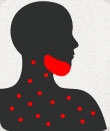
Mumps is a highly contagious viral infection that can affect many parts of the body. The hallmark sign of mumps is swelling of the salivary glands. [+] more
|
Rubella
Rubella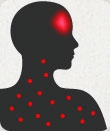
Rubella (German measles) is a contagious viral disease that can cause fever, rash, swollen glands and arthritis. Infection during pregnancy can lead to birth defects. [+] more
|
Tetanus
Tetanus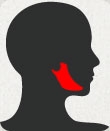
Tetanus (Lockjaw) is a bacterial infection that affects the nervous system and causes painful tightening of the muscles all over the body. It is spread through contact with contaminated surfaces. [+] more
|
Pertussis (Whooping Cough)
Pertussis (Whooping Cough)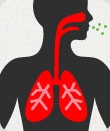
Pertussis (Whooping Cough) is a highly contagious bacterial respiratory disease. Pertussis causes violent coughing spells that make it hard to eat, drink or breathe, and is especially severe in young infants. [+] more
|
Chickenpox
Chickenpox
Varicella (Chickenpox) is a highly contagious viral infection characterized by a blistering rash that can cover the entire body. Complications include skin infections, pneumonia and brain swelling. [+] more
|
Hepatitis A
Hepatitis A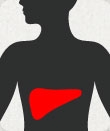
Hepatitis A (HAV) virus attacks the liver, and is spread through stool of an infected person by direct contact or by contaminated food or drink. [+] more
|
Meningococcal
Meningococcal
Meningococcal disease is a severe bacterial infection that causes inflammation of the membranes covering the brain and spinal cord (bacterial meningitis) and blood poisoning (septicemia), and requires immediate medical attention. [+] more
|
Hib
Hib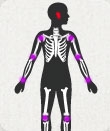
Haemophilus influenza type b (Hib) bacterium can infect a child’s skin, joints, bones and ears. Hib can lead to a variety of infections including pneumonia, bacteremia, and meningitis. [+] more
|
HPV
HPV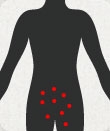
Human Papillomavirus (HPV) is the most common sexually transmitted virus in the United States. About 40 types of HPV can infect the genital areas of males and females. A few types can lead to cervical and other cancers. [+] more
|




